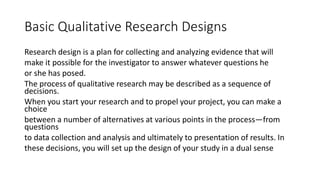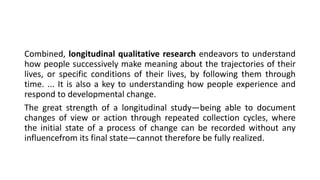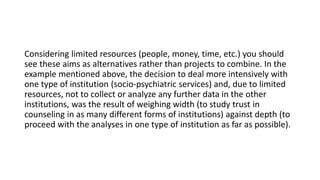1. Qualitative research design involves making sequential decisions about questions, data collection, analysis, and presentation to effectively answer the research questions.
2. Case studies aim to precisely describe or reconstruct a case, such as a person, organization, or institution, to understand it in full complexity or make cultural comparisons.
3. Comparative studies examine multiple cases regarding particular aspects to show differences, like views of health across cultures.


















